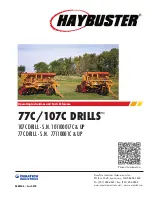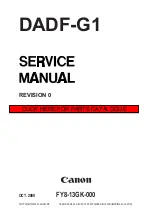
Installation and use
23
SEEDER MAT MCK 2500 SX
5.3 Practical example for calculating the “C” parameter to be
programmed
In the “C” parameter you have to program the number of impulses the proximity
sensor has to send to the Computer every 100 linear meters the machine works.
Therefore, you must calculate how many reference points will pass in front of the
sensor in 100 linear metres. In this example, we assume that the proximity sensor is
assembled so as to sense the 4 wheel bolts
1.
Place the machine on flat ground and, for example with a chalk, mark visible
on the outside of the tire wheel, the point where it touches the ground
(Figure 2 - ref. <A>)
;
2.
Choose a reference point on the ground in correspondence to the mark that
was made on the wheel
(starting point rif. <A>)
, and move the machine
slowly forward until the wheel completes an exact number of rotations. In
our example, these are 30. Then stop the machine
(arrival point rif <B>)
. To
obtain a calibration that is as precise as possible, at least 50 meters should
be covered.
3.
Measure the distance covered from the starting point to the arrival point.
4.
If a distance of 60 meters was measured, with a simple calculation of 60
meters divided by 30 rotations, the result is that each wheel rotation
corresponds to 2 meters.
5.
Dividing 100 meters (distance of reference for parameter “C”) by 2 meters
(wheel circumference), the result is that in 100 meters, the wheel of the
machine completes 50 rotations.
6.
At this point, just multiply the number of rotations the
wheel completes in
100 meters
(from the calculations of our example: 50) by the reference
number that the sensor detects for each wheel rotation (in our example: the
4 bolts) to obtain the number of references/impulses that are detected every
100 linear meters (in our example: 50x4 = 200). Program this value in
parameter “C”.
Parameter “C”
=
100 meters
x
No. on wheel reference
Wheel circumference in meters
A
Wheel revolutions ( ex. 30 )
Starting
point
Arrival
point
Distance covered ( ex. 60 meters)
Figure 2. Practical example for calculating the “C” parameter
B







































